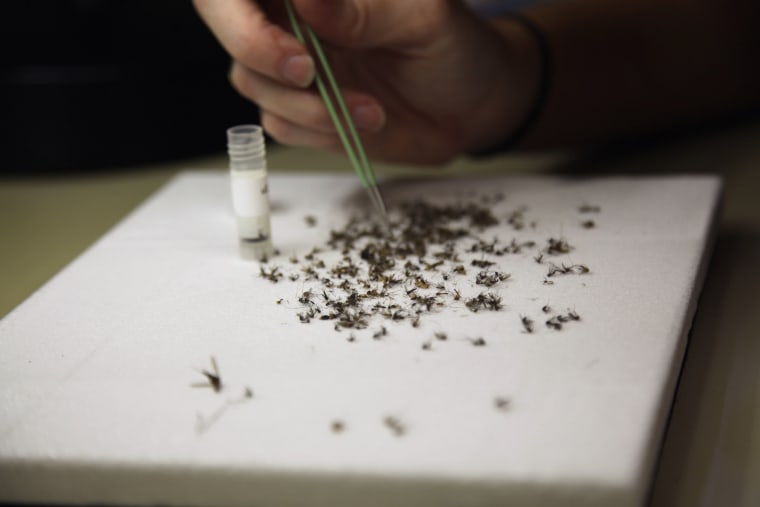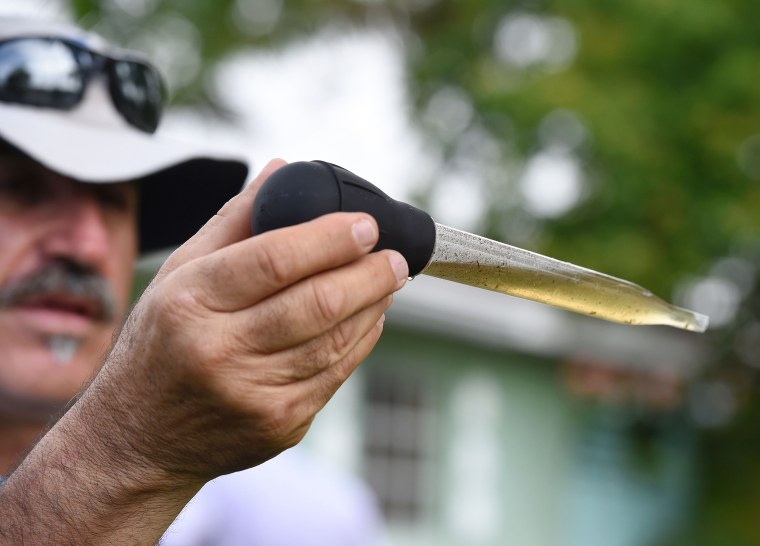Tom Frieden is frustrated.
For half a year now, he and colleagues have been trying to get Americans worried about Zika virus.
From the moment Frieden’s Centers for Disease Control and Prevention realized that Zika was probably causing horrendous birth defects in Brazil, the agency has been advising pregnant women to stay away from Zika-affected zones and warning that the virus would inevitably end up in the U.S.

Yet Congress has failed for five full months to appropriate money the agency said was urgently needed back in February, and polls show Americans were more worried about Ebola — which never threatened the U.S. — than they are about Zika.
States need to start killing mosquitoes now if they are to prevent outbreaks of Zika, and experiments underway to develop new vaccines may have to end if the cash doesn’t start flowing. Puerto Rico, an American territory, has a full-blown epidemic with thousands of verified cases and probably many thousands more that haven’t been reported.
Related: Few Americans Fear Zika
“The president calls the situation in Puerto Rico a crisis and it is,” Frieden told NBC News.
“But it’s an invisible crisis. In Puerto Rico, people are used to seeing dengue, which can kill you, or chikungunya, which can give you terrible joint pain for months.”
But Zika doesn’t cause symptoms in many if not most people who get infected and even when it does they are mild — a fever, a rash, an eye infection. “I have heard over and over again ‘I don’t know anyone with Zika’,” Frieden complained.
“Well, they don’t know anyone who knows they had Zika because four out of five people don’t have symptoms.”
"It’s an invisible crisis."
Zika does its real damage in developing babies, quietly and invisibly as they grow in their mothers’ wombs. A woman may not suspect she’s been infected, only to find out in the worst possible way when her child is born with severe birth defects, or when she miscarries.
Even when Zika is suspected, the real damage cannot be seen until a pregnancy is advanced. And doctors are now starting to report babies with Zika-linked brain damage that’s not immediately visible at birth. While the tiny, misshapen heads of microcephaly were the most obvious first sign of Zika’s arrival in Brazil, doctors have documented less obvious brain damage, too.
“I am just worried we are going to look back in four or five months and say, ‘Why didn’t we do more, then’,” Frieden said.
Related: Obama Says He Expects Congress to Move on Zika
Dr. Peter Hotez, dean of the National School of Tropical Medicine at Baylor College of Medicine, has been warning that the first real sign that Zika has started spreading in the U.S. could be an epidemic of birth defects similar to Brazil's sudden burst of mystifying birth defect.
So far, all registered Zika cases in the U.S. states have been carried by travelers. But the CDC and others predict local outbreaks once a few infected travelers get bitten by the mosquitoes that transmit it.
With almost no surveillance, it will be difficult to catch.
“Zika could already be here,” Hotez said. “There could be transmission under way and we would be in no position to detect it.”
State and local authorities have the responsibility to watch for outbreaks of new disease, but their funding has been cut year after year and there are not many good ways to watch for Zika.
They can test mosquitoes but Zika’s hard to detect in the insects even when it’s spreading as an epidemic. They can test blood donations — CDC did so in Puerto Rico to gauge the epidemic there — but Hotez notes only a small percentage of the population donates blood so it won’t show up until many people have been infected already.
Related: Puerto Rico Struggles to Deliver Contraceptives as Zika Spreads
“The best way to do this is to undertake programs of active surveillance, where you are going into community health centers and clinics and in everybody who has a fever and a rash you are taking a blood sample and testing it for Zika,” Hotez said.
“That’s why you need congressional funds.”
Ebola was dramatic. Zika is more subtle.
“It’s not like Ebola, where people will be dying in the streets,” Hotez said. “It’s what I call a delayed epidemic. The nightmare scenario is we miss it and seven, eight, nine months from now we see microcephaly cases showing up in the obstetric wards.”
“The way Congress is behaving, it’s almost as if they think it’s not real."
Plus the victims are likely to be people who don’t have a voice, Hotez said. “Who is going to pay the price? Pregnant women in urban centers on the Gulf Coast — the poor and disenfranchised,” he said.
And Americans saw that despite their fears about Ebola, it never caused an epidemic in the U.S. even as it killed more than 11,000 people in Sierra Leone, Guinea and Liberia. Two people caught the virus on U.S. soil — both nurses who treated a man who’d brought the virus from Liberia and who died from his infection. The nurses, given quick treatment, both recovered.
“I can say that it is different from Ebola, where we saw horrible deaths,” Frieden said. “Zika is much more theoretical. If I am not a woman of reproductive age or if I am not pregnant, then my risks are very different. There is a long time horizon there.”
Even in Puerto Rico, Frieden said, it’s difficult to get action. His current battle is trying to get residents to accept the idea of aerial spraying for mosquitoes.
Related: Baby Born in New Jersey With Zika-Linked Defect
“They are suspicious about it,” he said. That’s in part because Agent Orange — notorious for its use in Vietnam and now known to cause a range of diseases because of its dioxin content — was tested in Puerto Rico in the 1950s and 1960s.
But spraying for mosquitoes is accepted in most of the U.S. and it’s routine in southern states, especially when West Nile virus, another mosquito-borne infection, pops up.
“There is no doubt in my mind that if any other part of the U.S. had this much Zika, they would be spraying aerially,” Frieden said.
Related: Full Coverage of the Zika Epidemic
Mosquito season gets into full swing right about now and yet Congress is off for a three-day July 4 break, and there’s no sign of any agreement on appropriating money for Zika.
“The way Congress is behaving, it’s almost as if they think it’s not real,” Hotez said. “There does not seem to be any urgency. For something like Zika, we shouldn’t have to provide adult supervision over Congress.”

